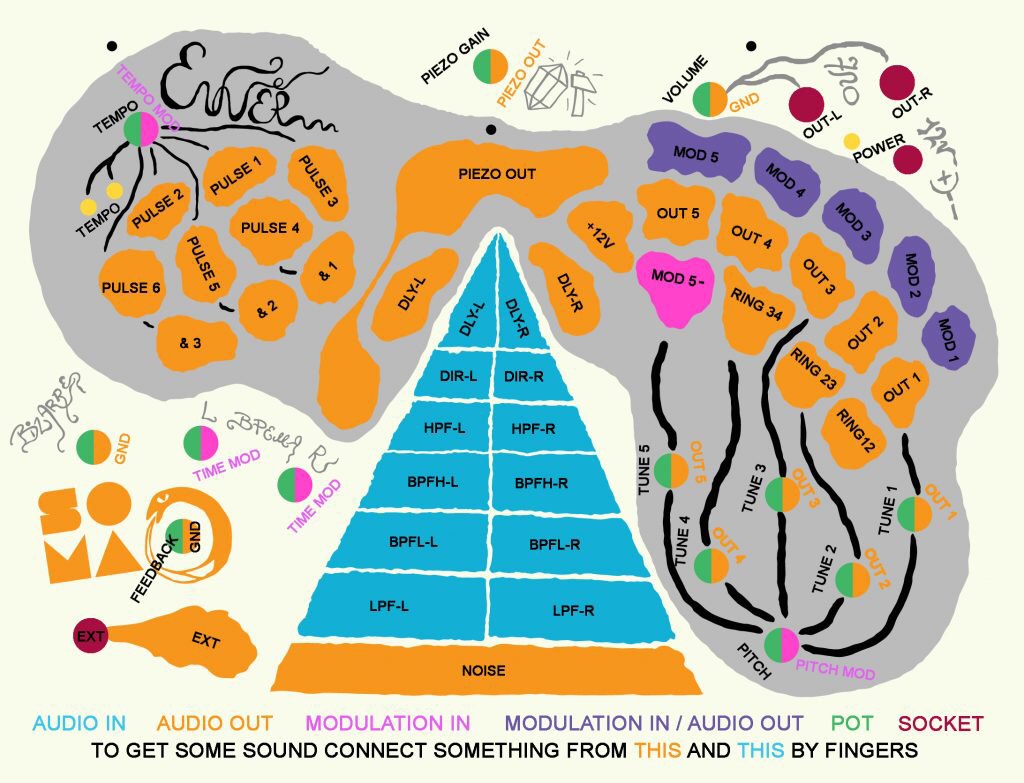SOMA Laboratory‘s newest synthesizer creation uses the human touch to generate audio signals. The ENNER performance tool focuses on skin contact as the main source of circuitry in operating the device.
Through physically touching different contact pads (called “pots”) on ENNER’s PCB-based board simultaneously, a current passes through the user’s body, yielding an audio signal. Touching pots at varying pressures can define many common parameters such as mix, velocity, timbre, feedback and more.
The graphic below showcases all of the ENNER’s connections and the many ways a simple touch of one or more pots can create unique possibilities.

Special Features
ENNER uses two types of synthesizers in its build. On the right side of the panel is a five-voice synthesizer with individual and overall frequency adjustments. Patching for ring modulation and output pads for each voice are included.
The second synth on the left panel provides pulses and rhythmic clicks, basses and octave tones. Four stereo fixed-frequency filters are given, meaning there are separate inputs and outputs for left and right channels.
The ENNER also offers stereo delay and common feedback options, including the quirky “ВРЕМЯ” that controls delay time and modulation.
A piezo pickup in ENNER’s wood casing allows the synthesizer to double as an electroacoustic instrument. Rubber bands placed on the synth’s panel captures sounds from clicks, scratches and other physical movements. ENNER’s speaker pickups also act as a mic, giving filtered feedback-based effects from the speakers attached to its output.
Lastly, an external in provides use for other devices to process audio through ENNER’s standout effects system.
The ENNER performance tool runs for $515. SOMA Laboratory created the ENNER alongside Danish sound artist SiSTOR, who designed both the main layout and the handwritten inscriptions. ENNER is available in black and red colors.
Find more information on the ENNER on SOMA Laboratory’s website.


